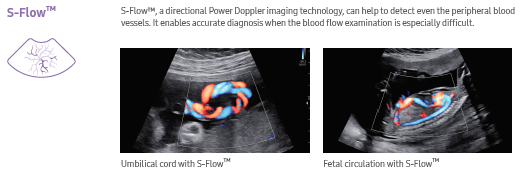

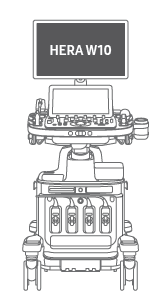
Crystal Architecture™, an imaging architecture that combines CrystalBeam™ and CrystalLive™, based on S-Vue™ Transducer, is to provide crystal clear image. CrystalBeam™ is a new beamforming technology beneficial in delivering high-quality image resolution and increased uniformity of images.
CrystalLive™ is Samsung’s up-to-date ultrasound imaging engine with enhanced 2D image processing, 3D rendering and color signal processing, to offer outstanding image performance and efficient workflow during complex cases.
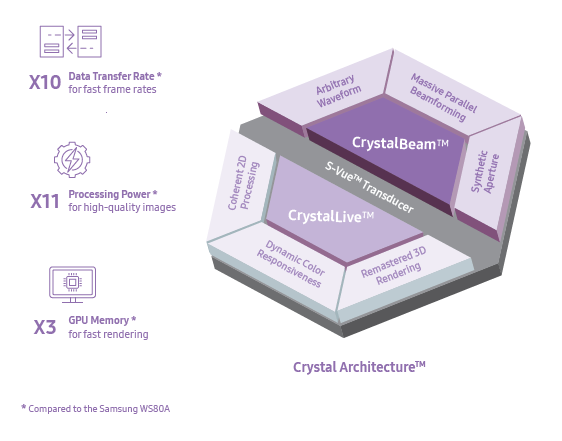
CrystalBeam™ utilizes Arbitrary Waveform Transmission, Massive Parallel Beamforming,
and Synthetic Aperture technologies to produce a faster frame rate and improved image uniformity.
Arbitrary Waveform Transmit refers to a widely-focused beam transmission technology that allows for more coherent images; sequentially Massive Parallel Beamforming and Synthetic Aperture enable more enriched and faster beam processing, based on a large amount of acquired ultrasound data.
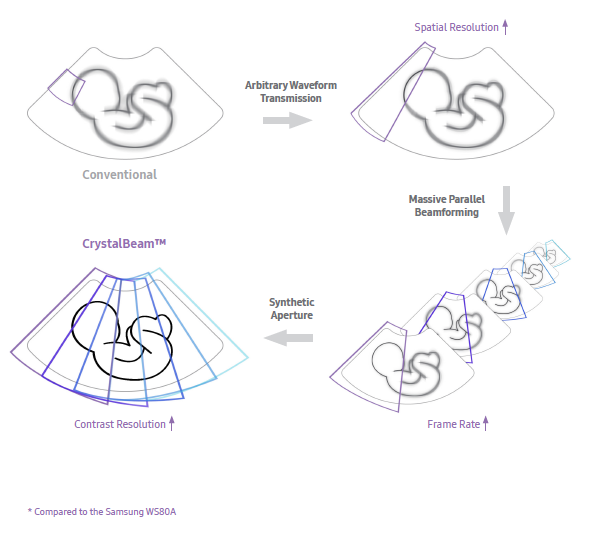
CrystalLive™ helps you to make more confident diagnoses with fundamental 2D images.
Some major advantages of 2D images include shadow-suppressed images, lessened halo artifacts, and mitigated blurred area. ShadowHDR™ is a key feature that shows shadowy areas, making it especially applicable for use in highly attenuated regions, such as fetal head or spine.
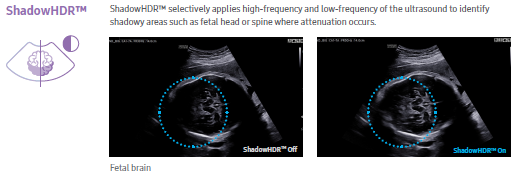
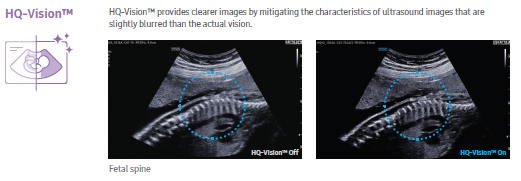
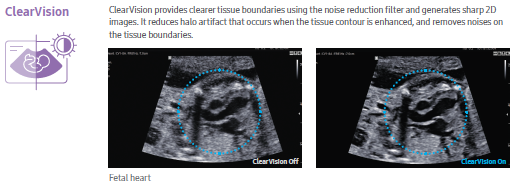
CrystalLive™ in 3D/4D provides users with more realistic and high-resolution images.
It outdoes conventional 3D imaging technologies in terms of viewing small parts and lighting effects. In addition, you are able to see 3D anatomy with more realistic depth perception, and
can visualize the internal and external structures at once.
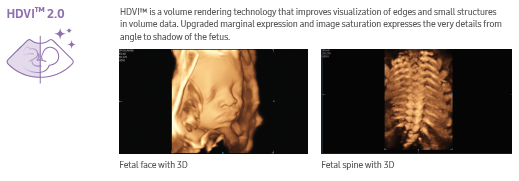
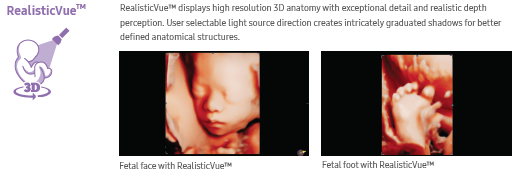

Color performance of CrystalLiveTM has been improved to clearly visualize the hemodynamics
of the blood flow. Greater sensitivity resulting from new color signal processing allows for a more accurate detection of peripheral blood vessels, microcirculatory blood flows, and volumes of
slow blood flows.
